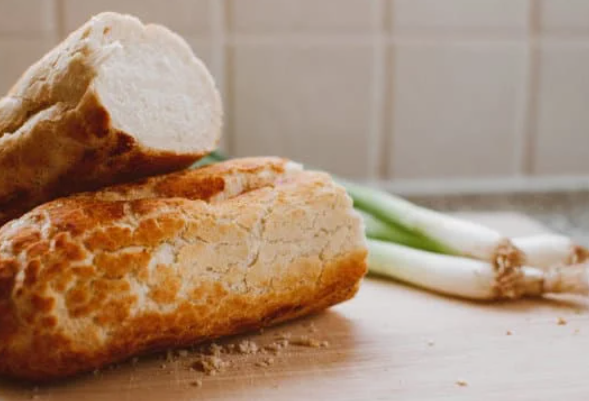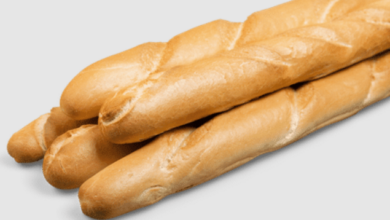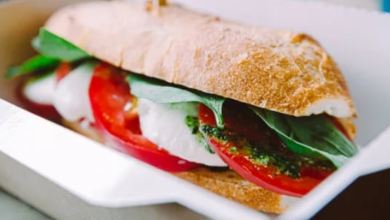Make Baguettes without a Baguette Pan? Who Knew?

What To Know
- In the absence of a baguette pan, creativity becomes your ally in shaping the dough.
- If you have a Dutch oven, you can use it to create a steamy environment that mimics the conditions of a baguette pan.
- You can achieve this by placing a pan filled with hot water at the bottom of the oven or by spraying the baguettes with water using a spray bottle.
Baguettes, the iconic French bread with its crispy crust and airy interior, are a staple in bakeries and homes worldwide. However, the pursuit of creating these culinary masterpieces often raises the question: “Can I make baguettes without a baguette pan?” The answer is a resounding yes! With the right techniques and a touch of ingenuity, you can achieve baguette perfection without the need for specialized equipment. This comprehensive guide will equip you with the knowledge and skills necessary to craft delectable baguettes in the comfort of your own kitchen.
1. Choosing the Right Dough: A Foundation for Success
The foundation of a perfect baguette lies in the dough. Opt for a high-quality bread flour with a high protein content, typically ranging from 11% to 13%. This type of flour provides the dough with the necessary strength and elasticity to withstand the shaping and baking process. Ensure that the dough is well-kneaded to develop the gluten, resulting in a smooth and extensible texture. Proper hydration is crucial, as a well-hydrated dough will produce a crispy crust and a moist interior. Aim for a hydration level of around 65-70%, meaning that for every 100 grams of flour, you would use 65-70 grams of water.
2. Shaping Without a Baguette Pan: Embracing Culinary Creativity
In the absence of a baguette pan, creativity becomes your ally in shaping the dough. Several methods can yield excellent results:
- Free-Form Baguettes: Divide the dough into equal portions and shape them into long, thin loaves. Place them directly on a baking sheet lined with parchment paper. This method allows for rustic, artisan-style baguettes.
- Rolling and Folding: Roll out the dough into a long, rectangular shape. Fold it in thirds, like a letter, and then roll it out again. Repeat this process several times to create layers and develop the dough’s structure. Finally, shape it into a baguette and place it on a baking sheet.
- Using a Dutch Oven: If you have a Dutch oven, you can use it to create a steamy environment that mimics the conditions of a baguette pan. Preheat the Dutch oven to 450°F (230°C) with the lid on. Place the shaped dough inside, cover it, and bake for 15 minutes. Remove the lid and continue baking until the crust is golden brown.
3. Achieving the Perfect Crust: Mastering Baking Techniques
A crispy, golden-brown crust is the hallmark of a well-baked baguette. Here are some tips to achieve crust perfection:
- Preheat the Oven Properly: Ensure that your oven is preheated to the desired temperature before baking. This creates a burst of heat that helps the baguettes rise quickly and develop a crispy crust.
- Steam Injection: Introducing steam into the oven during the initial baking stage helps create a crispy crust. You can achieve this by placing a pan filled with hot water at the bottom of the oven or by spraying the baguettes with water using a spray bottle.
- Scoring the Dough: Before baking, score the top of the baguettes with a sharp knife or razor blade. This allows the bread to expand properly and creates a visually appealing pattern.
4. Cooling and Storing: Preserving the Baguette’s Freshness
Once the baguettes are baked to perfection, allow them to cool on a wire rack before slicing and serving. This prevents the bread from becoming soggy and allows the flavors to develop fully. Store the baguettes in an airtight container at room temperature for up to 2 days. For longer storage, you can freeze the baguettes for up to 2 months.
5. Troubleshooting Common Issues: Overcoming Baking Challenges
Baking baguettes without a baguette pan may present certain challenges. Here’s how to address some common issues:
- Flat Baguettes: Ensure that the dough is properly kneaded and has developed sufficient gluten. Inadequate kneading can result in flat, dense baguettes.
- Soggy Crust: Make sure the oven is preheated properly and that you introduce steam during the initial baking stage. A lack of steam can lead to a soft, soggy crust.
- Burnt Baguettes: Keep a close eye on the baguettes while baking. Overbaking can result in burnt or overly browned crusts. Adjust the baking time accordingly.
6. Experimenting with Different Ingredients and Flavors: Unleashing Your Culinary Creativity
The world of baguette baking is a canvas for culinary experimentation. Here are some ideas to inspire your creativity:
- Whole Wheat Baguettes: Substitute a portion of the bread flour with whole wheat flour to create a healthier and more flavorful baguette.
- Herb-Infused Baguettes: Add chopped herbs like rosemary, thyme, or oregano to the dough for a burst of flavor.
- Cheese-Filled Baguettes: Roll grated cheese into the dough before shaping it into baguettes. This creates a delicious and gooey filling.
7. Baguette Accompaniments: Elevating the Culinary Experience
Baguettes are versatile culinary companions that pair well with a variety of accompaniments:
- Butter and Jam: The classic combination of butter and jam is a timeless treat that complements the crispy crust and airy interior of a baguette.
- Cheese and Charcuterie: Create a delightful platter of cheese, cured meats, and baguettes for a sophisticated snack or appetizer.
- Soup and Salad: Serve baguettes alongside a hearty soup or a fresh salad for a balanced and satisfying meal.
“Coda”: A Culinary Symphony of Crusty Perfection
Baking baguettes without a baguette pan is an art form that requires patience, skill, and a touch of ingenuity. With the right techniques and a willingness to experiment, you can create crusty, flavorful baguettes that rival those from professional bakeries. Embrace the challenge, unlock your culinary potential, and let the aroma of freshly baked baguettes fill your kitchen with the magic of baking.
Answers to Your Questions
1. Can I use a baking sheet instead of a baguette pan?
Yes, you can use a baking sheet lined with parchment paper to bake baguettes. However, the baguettes may not have the same shape as those baked in a baguette pan.
2. How can I score baguettes without a special scoring tool?
You can use a sharp knife or a razor blade to score baguettes. Make sure the blade is sharp and that you score the dough deeply enough to allow for proper expansion during baking.
3. What is the best way to store baguettes?
Store baguettes in an airtight container at room temperature for up to 2 days. For longer storage, you can freeze the baguettes for up to 2 months.





